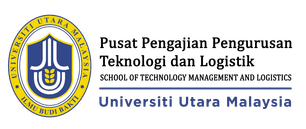MOCAF FLOUR AS AN ALTERNATIVE INGREDIENT: A STUDY ON BATIK-PATTERNED COOKIES
DOI:
https://doi.org/10.32890/jtom2020.15.1.4Keywords:
mocaf flour, modified cassava flour, batik, batik – patterned cookiesAbstract
The mocaf flour also known as modified cassava flour is flour that is modified by using microbial fermentation techniques. It has similar physical and chemical characteristics that could substitute wheat flour. This study aims to obtain the composition or formula in making batik – patterned cookies as well as attaining public acceptance of the product. A series of four combinations of mocaf and wheat flour were formulated and an acceptance test was carried out on 30 panelists in Yogyakarta within August and October 2019. The findings disclosed that the cookie sample X3 with the combination of 150 gram mocaf flour and 50 gram wheat flour had the highest value (M = color: 3.37; aroma: 3.13; texture: 3.20; and taste: 3.33). This study is the first to assess the acceptance rate of batik – patterned cookies using mocaf flour. The significant results deepen our understandings of the demand of the consumers in order to increase selling value thus indirectly promoting the batik motifs to the consumers.
Metrics
References
Braker, F. (2003). The simple art of perfect baking. New York: Chronicle Books.
Cohen, D. (2003). Australia has become the academic destination for much of Asia. Can it handle the influx. The Chronicle of Higher Education, 49(21), A40.
Henderson, J. (2009). Food tourism reviewed. British Food Journal, 111(4), 317-326.
Hengky, S. H. (2015). Beneficial images: Batik handicraft tourism in Yogyakarta, Indonesia. Bus Econ Res, 11-23.
Maulia, E. (2009). Batik selected for UNESCO cultural heritage list. Jakarta Post, 8 September, http://www.thejakartapost.com/news/2009/09/08/batik-selected-unescocultural-heritage-list.html. Accessed August 24, 2019.
National Restaurant Association (NRA) (2015). Facts at a glance. Available at: www.restaurant.org/research/facts. Accessed September 20, 2019.
Robinson, R. N., & Getz, D. (2014). Profiling potential food tourists: An Australian study. British Food Journal, 116(4), 660-706. DOI 10.1108/BFJ-02-2012-0030.
Soesilowati, E., Martuti, N. K. T., & Paramita, O. (2020). Business feasibility of mocaf flour products, cassava starch, purple sweet potato and yellow yams. Journal of Social Sciences Research, 6(2), 167-172. doi.org/10.32861/jssr.62.167.172.
Subagio, A. (2009). Modified cassava flour sebuah masa depan ketahanan pangan nasional berbasis potensi lokal. Jember: FTP Universitas Jember.
Subagio, A. (2011). Pengembangan Agribisnis Tepung Mocaf di Tanjungsari, Gunungkidul. Prosiding Seminar Hasil Penelitian Tanaman Aneka Kacang dan Umbi.
Yuliati, Y., & Yudisiani, Y. (2018). Effect of batik nusantara bengkulu karnaval on purchase decision of batik besurek. In Proceeding International Conference on Media and Communications in Southeast Asia, Surabaya, Indonesia.
Yunus, U., & Tulasi, D. (2012). Batik Semiotics as a media of communication in Java. Cultura, 9(2), 143-150.
Winarno, F. G. (2002). Kimia pangan dan gizi. Jakarta: Gramedia.
Downloads
Published
How to Cite
Issue
Section
License
Disclaimer
The Journal of Technology and Operation Management (JTOM) has taken all reasonable measures to ensure that material contained in this website is the original work of the author(s). However, the Journal gives no warranty and accepts no responsibility for the accuracy or the completeness of the material; no reliance should be made by any user on the material. The user should check with the authors for confirmation. Articles published in the Journal of Technology and Operation Management (JTOM) do not represent the views held by the editors and members of the editorial board. Authors are responsible for all aspects of their articles except the editorial screen design.














